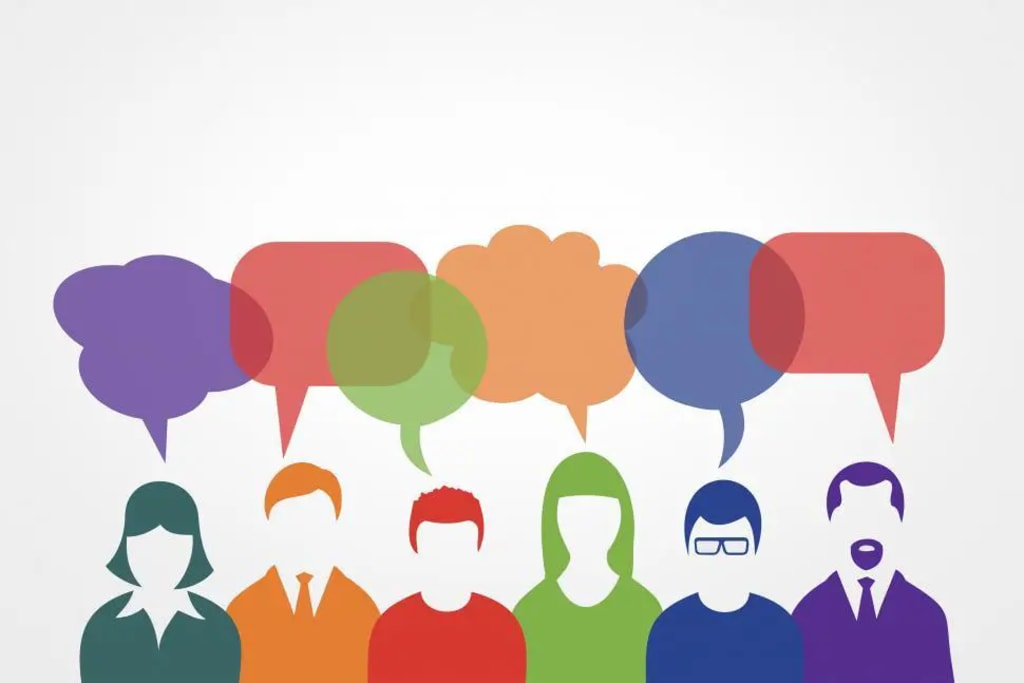
Person communication refers to the exchange of information and ideas between individuals through verbal and non-verbal means. It is the most basic form of communication and occurs in a variety of contexts, including face-to-face conversations, phone calls, video conferencing, and even online chats. Person communication is essential for building and maintaining relationships, resolving conflicts, and achieving personal and professional goals.
Verbal communication is one of the most critical components of person communication. It involves the use of words and speech to convey a message. It is essential to use clear and concise language when speaking to others, as this helps to minimize misunderstandings and improve communication effectiveness. Tone, volume, speed, and pronunciation are also critical components of verbal communication. They can significantly impact the meaning of the message and how it is received by others.
Non-verbal communication is equally important in person communication. It involves the use of body language, facial expressions, gestures, and eye contact to convey a message. Non-verbal cues often convey more meaning than words and can significantly impact how a message is received. For example, crossing arms or avoiding eye contact can indicate defensiveness, while nodding or smiling can signal agreement.
Effective person communication requires active listening, which involves paying attention to the speaker and engaging in the conversation. Active listening requires focusing on the message being conveyed, understanding the speaker's perspective, and providing feedback. It is also essential to listen without interrupting and to ask questions when necessary to clarify the message.
Emotional intelligence is another critical component of person communication. Emotional intelligence refers to the ability to understand and manage one's own emotions and the emotions of others. It helps individuals to communicate effectively, even in challenging situations. For example, being aware of one's own emotions and taking time to calm down before engaging in a conversation can help to minimize conflict and improve communication effectiveness.
Body language is another critical aspect of non-verbal communication. It includes posture, facial expressions, gestures, and eye contact. Body language can convey a message without words and can significantly impact how a message is received. For example, slouching can indicate boredom or disinterest, while leaning forward can signal engagement and interest.
Eye contact is an essential component of effective person communication. It can convey interest, attention, and credibility. However, too much eye contact can be intimidating, while too little can signal a lack of interest or confidence. It is essential to strike a balance and maintain eye contact while speaking and listening to others.
Effective person communication requires the use of both verbal and non-verbal cues. It is essential to be aware of the message being conveyed and to choose the most appropriate method for the situation. For example, a smile and a nod can signal agreement or understanding, while a frown and a shake of the head can indicate disagreement or confusion.
Person communication also involves managing conflicts that may arise during conversations. Conflicts can occur due to differences in opinions, beliefs, or goals. To effectively manage conflicts, it is essential to understand the root cause and to identify common ground. It is also important to listen to the other person's perspective and to express one's own in a calm and respectful manner.
In conclusion, person communication is a crucial component of human interaction and is essential for building and maintaining relationships, resolving conflicts, and achieving personal and professional goals. Effective person communication requires the use of verbal and non-verbal cues, active listening, emotional intelligence, and the ability to manage conflicts. By mastering these skills, individuals can improve their communication effectiveness and achieve their personal and professional goals.
Communication refers to the transfer of information, ideas, thoughts, opinions, and emotions from one person or entity to another through various mediums. It is a complex process that involves the encoding of a message, its transmission, and the decoding of the message by the recipient. Communication can be verbal, written, or nonverbal, and it can take place between individuals, groups, organizations, and even society as a whole.
Verbal communication is the exchange of information through spoken words, either face-to-face or through technology such as the telephone or internet. Verbal communication can be formal or informal, and it can take the form of a conversation, lecture, or presentation.
Written communication involves the transfer of information through written texts such as emails, letters, reports, and articles. Written communication is important for preserving information and allowing for its dissemination to a large audience. It can also serve as a permanent record of a message.
Nonverbal communication refers to the transfer of information through nonverbal cues, such as body language, facial expressions, gestures, and tone of voice. Nonverbal communication can be more impactful than verbal communication, as it can convey emotions and attitudes that are not explicitly stated.
Effective communication requires not only the transmission of information but also the understanding of the message by the recipient. This requires active listening and the ability to interpret nonverbal cues. The context in which the communication takes place, such as culture, power dynamics, and previous experiences, can also impact the effectiveness of communication.
Barriers to effective communication can include language differences, physical barriers, psychological barriers, and cultural differences. Overcoming these barriers requires a deep understanding of the context and the use of effective communication techniques.
Technology has greatly impacted the way in which communication takes place. The rise of digital communication has allowed for instant and widespread dissemination of information, but it has also raised concerns about privacy and the potential for the spread of misinformation.
In conclusion, communication is a complex and multifaceted process that plays a critical role in human interaction and the transfer of information. Effective communication requires an understanding of the context and the use of appropriate techniques to overcome barriers. The impact of technology on communication continues to evolve, and it is an important area of study for those interested in the field.
About the Creator
Kumara Swamy
Creator





Comments
There are no comments for this story
Be the first to respond and start the conversation.